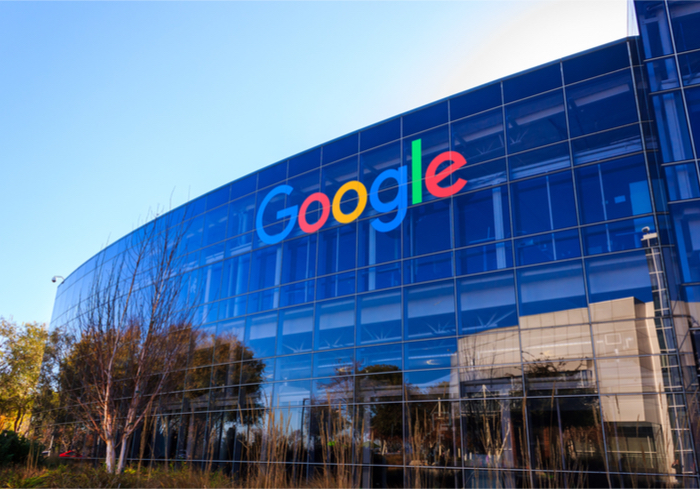Google Feels The Cost-Per-Click Squeeze In Q4

Alphabet managed to beat Wall Street expectations for both earnings and revenue in the final quarter of 2018. Earnings came in at $12.77 per share, well ahead of the consensus estimate of $10.82. Meanwhile revenue came in at $39.28 billion, comfortably ahead of the $38.93 billion, according to analyst expectations.
As always, Alphabet’s advertising revenue was far and away the firm’s revenue driver — up 20 percent from last year’s fourth quarter to $32.6 billion (which was the same growth rate it logged in Q3). Alphabet did come in below analyst expectations in one area — arguably the only area it would want to: Traffic Acquisition Costs (TAC).
TAC is mostly made up of things like the fees Google pays to companies, such as Apple, to be the default search engine. For Q4, Alphabet’s TAC rate came in at $7.44 billion, versus the $7.62 billion Wall Street was anticipating. All in, TAC was up 13 percent from $6.58 billion during Q3, and up 15 percent from $6.45 billion during the year-ago quarter. However, TAC, as a percentage of advertising revenue, is down — 23 percent (as opposed to 24 percent at this time last year), and in line with analyst expectations.
What was not quite as well anticipated, and apparently alarming for investors, was its cost-per-click — the amount Alphabet charges advertisers. That amount has dropped sharply year on year by 29 percent, and 9 percent from last quarter. Those steep and rapid declines have some analysts worried, particularly in light of strong recent earnings from both Facebook and Amazon when it comes to digital advertising revenue. Concerns that began in Q3 seem to have persisted — and, in some cases, grown — in Q4.
In Q3, Google faced concerns over Amazon reporting 123 percent growth in advertising revenue that quarter, and reports began emerging that advertisers had, in some cases, moved more than half of the budgets they normally spent with Google Search to Amazon ads instead. While Amazon didn’t quite have triple-digit growth in its ad business in Q4 2018, it got awfully close at 97 percent, and remains an ongoing threat to Google’s dominance of the market.
Facebook, Alphabet’s long competitor in the digital advertising world, reported a strong Q4 — with $16.6 billion in advertising revenues, a 30 percent year-on-year jump. Facebook also saw its ad prices fall by a much smaller 2 percent margin. Meanwhile, the number of ad impressions across its platforms increased by 34 percent. Facebook did not break down advertising revenue by ad product type, but did report that 93 percent of ad revenue during the fourth quarter came from mobile advertising. That’s up from 89 percent for the same period last year.
With its top competitor looking strong (and a new challenger eating up market share, particularly in the world of consumer packaged goods), investors and analysts seem concerned that Alphabet will face increasing price pressures that will compress margins.
Speaking of which, Alphabet also reported a weaker-than-expected operating margin of 21 percent — as 22 percent had been as expected and, at this time last year, Alphabet was reporting an operating margin of 23 percent.
In a conversation with analysts, however, Google CEO Sundar Pichai pointed to other advances out of Alphabet in general, and Google in specific. Alphabet continues to grow its “other revenue,” home of both its cloud business and hardware sales. The division accounted for $6.49 billion during the quarter, a little ahead of Wall Street’s estimates of $6.43 billion. Where those funds came from specifically, Alphabet did not break down — though, about a year ago, Google did report that its cloud business brought in over $1 billion during Q4. All in all, other revenues increased 31 percent year on year.
Pichai called out the strong momentum in the cloud business — alongside strength and “strong momentum” for Google Assistant, hardware devices, core services (search, maps, news) and YouTube. He also noted that the new Google Home Hub had been its top-selling product all season, and that Google Express has been picking up momentum, roughly doubling its shopping rates during the season (though he declined to add any figure more specific than that).
He further noted on the call with investors that, while Google tends to think about its hardware efforts as part of its larger mission to connect consumers to its core search offering, that goal is changing some as the hardware begins to play an increased role in consumers’ lives, particularly in conversation with Google’s software.
“Over time, as we scale up our hardware efforts, it will definitely change what kind of experiences we can deliver. The Home Hub offers a good example here — it combines the Google Assistant, search and YouTube, and all of this capability, into one place. You start to get a glimpse of the future, and the kind of connected ecosystem that the consumer can move within,” he said.
Pichai noted that, as Alphabet is expanding its ecosystem and capacities, it is thinking differently and more expansively about ads — and how to use artificial intelligence (AI) to help its partners better tailor ad presentations to their customers. He also called out innovation in advertising that is starting to appear on Google platforms — for example, an advertising preview for the Lego movie sequel earlier this year that captured 17 million views by embedding the entirety of the first movie within the ad itself.
“Everything we do at Google is driven by making information accessible and useful to everyone. That is complex work that is constantly getting harder, and we strive to do it better than others,” Pichai told analysts.
However, analysts and investors, it seems, were less than totally convinced. Despite the earnings beat, Alphabet’s stock slipped 2.6 percent in after-hours trading.